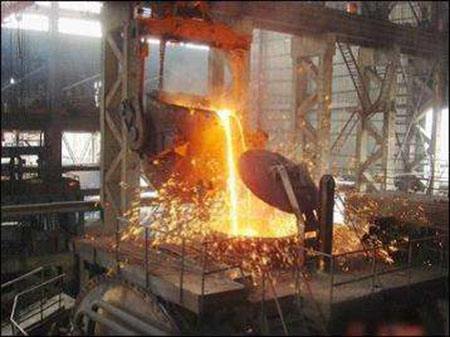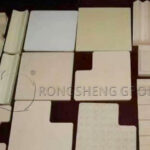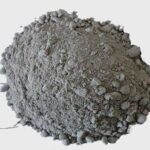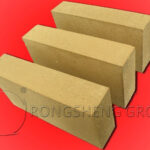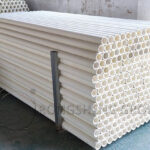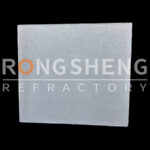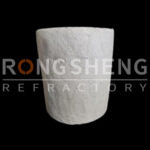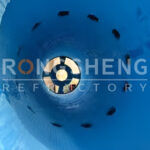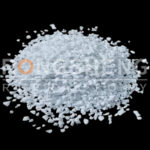Iron Mixing Furnace Description
Iron mixing furnace is iron liquid loading equipment, which can keep iron liquid temperature and composition homogeneous, as well as get good connection and balance between small iron liquid ladle and large scale steel smelting furnace. Iron mixing furnace is barrel type shape, inner lining thickness usually between 600~800mm. Adjacent to metal shell, a 10~20mm thick of asbestos board, refractory fiber felt or calcium silicate board insulating layer is paved, then is a 113~230mm thick layer built by clay insulating bricks or cenosphere bricks. Working layer usually uses clay bricks or high alumina bricks for the masonry.
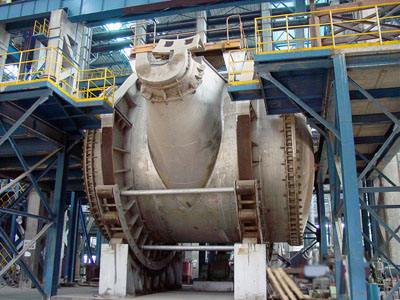
For basic iron mixing furnace, the working layer of inner lining is usually built by ordinary magnesia bricks, the parts where doesn’t contact with water adopt magnesia alumina bricks, other parts adopts high alumina bricks. For acid iron mixing furnaces, the working layer is usually masoned by silica bricks.
In recent years, unshaped refractory has developed rapidly, lots of iron mixing furnaces begin to use Al2O3-SiC-C casting material and get very ideal effect. The service life of iron mixing furnace is relatively long, the minimum service life is 3 months and the max. service life can reach to 2~3 years.
Iron Liquid Tank Refractory Material
Iron liquid tank is the vessel to deliver iron liquid to converter and electric furnace. As there is no special smelting process, iron liquid temperature is usually between 1300~1450℃. When loading iron liquid, ladle lining will endure high temperature iron liquid fluxing abrasion and strong thermal shock stress, iron liquid and slag’s chemical corrosion, air oxidation, etc. When iron tank is emptied, iron tank inner lining will suffer drastic temperature decrease and air oxidation. As processes repeat over and over again, thermal shock resistant, scouring resistant and oxidation resistant refractory material should be chosen. Standard clay bricks’ service life is 200 times, high alumina bricks’ service life is about 300~400 times. But high alumina silicon carbide bricks’ service life can be more than 800 times, after patching and maintenance, service life can reach to more than 1500 times. The application of high grade refractory materials such as Al2O3-SiC-C castable and Al2O3-SiC-C bricks is a trend.
Iron mixing furnace refractory material Index
| Item | Clay bricks | Al2O3-SiC bricks | Al2O3-SiC-C bricks | High alumina bricks | Al2O3-SiC-C castable |
| Application parts | Wall and bottom working layer | Wall and bottom working layer | Slag line | Wall and bottom working layer | Bottom & molten bath &slag line |
| Al2O3 % > | 42 | 70 | 70 | 70 | 60 |
| Fe2O3 %< | 1.5 | / | / | 1.8 | 1.5 |
| SiC % > | / | 8 | 8 | / | 7 |
| C % | / | / | 5 | / | 2 |
| Apparent porosity % | 16 | 17 | 5 | 18 | 16 |
| Bulk density g/cm3 | / | 3.0 | 2.85 | 2.8 | 2.6 |
| Compression strength Mpa | 50 | 56.3 | 77.1 | 44.6 | 30 |
| Refractoriness ℃ | 1750 | / | / | 1790 | / |
| Refractoriness under load ℃ | 1450 | 1450 | / | 1550 | / |
| Thermal shock resistance /times | 20 | 30 | / | 20 | / |
Refractory Coating Material Manufacturer RS kiln Refractory
Rongsheng Kiln Refractory established in the early 1990s, is a comprehensive enterprise in refractory material industry and high temperature fireproof industry, products covering metallurgy, refractory building, electric power, chemical industry, etc. Hot sale products such as refractory coating material, ceramic fiber refractory material, refractory bricks, castable, refractory cement and so on are exported to many countries in the world and highly appreciated by customers.
If you have any interest in refractory products or have any question, please feel free to contact RS Kiln Refractory.
